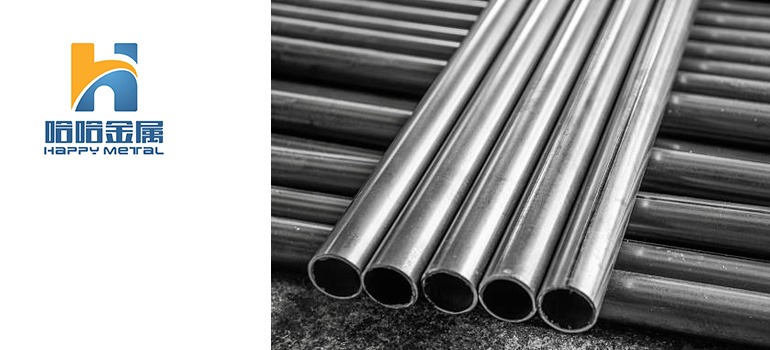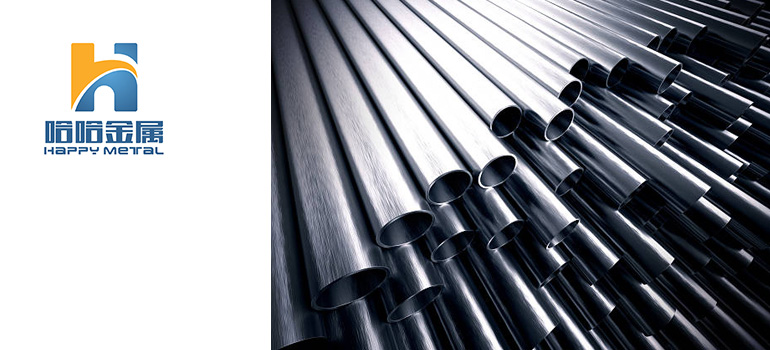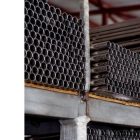Summary:
Stainless Steel Pipe Cutting: Best Practices for Precision and Efficiency
Essential Tools for Stainless Steel Pipe Cutting
Safety Considerations for Stainless Steel Pipe Cutting
Maximizing Efficiency in Stainless Steel Pipe Cutting
Essential Tools for Stainless Steel Pipe Cutting
When it comes to cutting stainless steel pipes, choosing the right tools is absolutely essential. The tools you use not only affect the precision of the cut but also the efficiency and overall quality of the job. Whether you’re working on a DIY project or handling industrial-scale work, understanding and using the proper cutting tools will make the process smoother and help avoid unnecessary hassles.
Choosing the Right Cutting Tool for Stainless Steel
The first step in choosing a cutting tool is to consider the thickness and hardness of the stainless steel pipe. Stainless steel is generally tougher than many other metals, which means you’ll need more powerful tools to cut through it. For thinner pipes, manual cutting tools like pipe cutters or pipe wrenches might be sufficient. However, for thicker materials, you’ll need specialized equipment like band saws, cutting machines, or even laser cutters, as these tools provide the higher cutting power and precision needed for thicker stock.
Another important factor to consider is the sharpness of your cutting tool. Dull tools can make the cutting process slower and less accurate, and they can even cause material overheating or distortion. Regularly checking and replacing worn-out blades or saws ensures you maintain cutting precision and avoid unwanted defects.
The Role of Saw Blades in Stainless Steel Pipe Cutting
Saw blades play a crucial role in cutting stainless steel pipes, particularly when using band saws or circular saws. The type and material of the saw blade significantly impact the cutting results. Given the hardness of stainless steel, you’ll need a saw blade specifically designed for metal cutting. These blades are typically made from high-speed steel (HSS) or carbide materials to withstand the intense heat and pressure encountered during cutting.
Choosing the right tooth design for your saw blade is also key. If you’re cutting thicker pipes, using a saw blade with larger teeth helps reduce friction, preventing overheating. On the other hand, for thinner pipes, a blade with finer teeth will deliver smoother and more precise cuts, helping to minimize any rough edges.
How to Maintain Your Stainless Steel Cutting Equipment
Proper maintenance of your stainless steel cutting tools is essential for ensuring cutting quality and extending the life of your equipment. After each use, make sure to check the condition of your blades or saws. If they show signs of wear, replace them as needed. For mechanical equipment, regular cleaning and lubrication are critical to reducing wear and preventing equipment failure, keeping your tools in top condition for the next job.
Additionally, it’s important to periodically check the alignment and calibration of your cutting equipment. Misaligned tools can result in uneven cuts or unnecessary material waste. A quick pre-use check to ensure your tools are properly aligned can significantly improve your cutting efficiency and help extend the lifespan of your equipment.
Safety Considerations for Stainless Steel Pipe Cutting

Cutting stainless steel pipes can be dangerous if proper safety precautions are not followed. The high hardness of the material, the tools required, and the heat generated during the cutting process all pose potential risks. Whether you are using manual or machine tools, ensuring a safe working environment and using protective gear is essential to prevent injury and ensure the best results. Below are key safety considerations when cutting stainless steel pipes.
Essential Personal Protective Equipment (PPE) for Cutting Stainless Steel Pipes
Wearing the proper protective gear is one of the most important safety precautions to take when cutting stainless steel pipes. The tools used can generate flying debris, sharp edges, and intense heat, all of which can lead to injuries if you’re not properly equipped.
How to Stay Safe:
- Safety Glasses or Goggles: Stainless steel cutting can create sparks and debris that could harm your eyes. Always wear safety glasses or goggles that provide full eye protection.
- Gloves: Wear heavy-duty gloves that protect your hands from sharp edges, especially when handling cut pipes or moving materials. Leather gloves or cut-resistant gloves are ideal.
- Hearing Protection: If you’re using power tools like grinders, saws, or cutting machines, the noise level can be loud enough to cause hearing damage over time. Always wear earplugs or earmuffs to protect your ears from prolonged exposure to high-decibel sounds.
- Protective Clothing: Wear long sleeves, long pants, and a protective apron to prevent sparks or debris from coming into contact with your skin. In high-risk environments, fire-resistant clothing is also a good option.
- Respiratory Protection: If you are working in an area with poor ventilation or using cutting tools that create dust or fumes (such as in welding or grinding), wear a dust mask or respirator to protect your lungs.
Proper Ventilation and Fire Safety in Pipe Cutting Workspaces
When cutting stainless steel, especially with power tools like grinders or cutting machines, high temperatures and sparks can be generated, creating fire hazards. Additionally, poor ventilation can lead to a buildup of harmful fumes or gases, particularly if you’re working in an enclosed space.
How to Stay Safe:
- Ventilation: Ensure that your workspace is well-ventilated, especially when cutting stainless steel with tools that generate heat or fumes. If working indoors, consider using fans or exhaust systems to circulate fresh air and remove toxic fumes. In extreme cases, consider using a fume extractor.
- Fire Extinguisher: Always have a fire extinguisher on hand in the cutting area, especially when using tools that produce sparks or heat. Ensure that the extinguisher is rated for metal fires (Class D fire extinguisher), as regular extinguishers might not be effective on metal fires.
- Clear Flammable Materials: Before cutting, ensure that the work area is clear of any flammable materials, such as papers, oils, or cloth. Sparks can easily ignite these materials, leading to a dangerous situation.
- Hot Work Permit: If cutting stainless steel in a confined or hazardous area (e.g., near combustible materials), make sure to follow any local regulations and obtain a hot work permit. This is a standard procedure in many industries to control fire risks during operations involving heat or sparks.
How to Safely Handle Stainless Steel Pipe Cutting Tools
The tools used for cutting stainless steel pipes, whether manual or power-driven, can be dangerous if not used properly. Ensuring proper tool handling and maintenance is essential to avoid accidents and achieve safe, clean cuts.
How to Stay Safe:
- Inspect Tools Before Use: Always check your cutting tools before starting work. Ensure that the blades, saws, or other cutting parts are sharp, clean, and properly attached. Dull or damaged tools can be more dangerous and inefficient.
- Follow Manufacturer Instructions: Whether you’re using a manual cutter, band saw, or power grinder, always follow the manufacturer’s instructions for safe operation. This includes understanding the tool’s capabilities, limitations, and recommended safety procedures.
- Stabilize the Pipe: When cutting, make sure the stainless steel pipe is securely clamped or supported. If the pipe shifts or moves during cutting, it can cause accidents or result in inaccurate cuts.
- Keep Hands and Body Clear: Always keep your hands, arms, and body clear of the cutting area. Never attempt to remove debris or adjust the workpiece while the tool is in motion.
Proper Handling and Support of Stainless Steel Pipes
Stainless steel pipes can be heavy and awkward to handle, which increases the risk of injury. Lifting or moving pipes incorrectly can strain your body, cause accidents, or even lead to falls or dropped materials.
How to Stay Safe:
- Use Proper Lifting Techniques: When lifting stainless steel pipes, always bend at the knees and keep your back straight. Avoid twisting your body while lifting. If the pipe is too large or heavy, ask for assistance or use lifting equipment, such as a hoist or pipe rollers.
- Use Pipe Supports and Clamps: To prevent the pipe from rolling or shifting during cutting, use pipe supports, clamps, or vices to secure the material. This ensures stability and reduces the risk of injury or an inaccurate cut.
- Be Mindful of Sharp Edges: Stainless steel pipes can have sharp edges, particularly after being cut. Always handle the pipes with gloves, and avoid touching the cut edges until they are properly deburred or smoothed.
Ensuring a Clean and Safe Work Area
A cluttered or disorganized work environment can increase the risk of accidents when cutting stainless steel pipes. To maintain a safe workspace, keep the area clean and organized to minimize hazards.
How to Stay Safe:
- Clear the Work Area: Remove any unnecessary tools, debris, or materials from the work area. Keeping the space tidy helps reduce the chances of tripping, slipping, or accidental contact with sharp materials.
- Adequate Lighting: Ensure that the work area is well-lit, so you can clearly see the cutting line and handle your tools properly. Poor visibility can lead to mistakes, accidents, or injury.
- Proper Tool Storage: When not in use, store your cutting tools and materials in their designated areas. This prevents them from becoming tripping hazards and helps maintain the overall organization of your workspace.
Training and Knowledge
Finally, ensuring that everyone involved in cutting stainless steel pipes is properly trained and familiar with the tools and safety practices is crucial. Lack of knowledge or improper technique can lead to accidents, tool damage, and poor results.
How to Stay Safe:
- Provide Training: If you’re working in a team, make sure that everyone is properly trained in safe cutting practices. This includes understanding tool operation, safety gear usage, and emergency procedures.
- Stay Informed: Always stay updated with industry safety standards and any changes to regulations. Follow best practices for stainless steel cutting and encourage a culture of safety at all times.
Maximizing Efficiency in Stainless Steel Pipe Cutting
Cutting stainless steel pipes efficiently is essential to maintaining productivity and minimizing costs, especially in large-scale projects. Achieving efficiency in stainless steel pipe cutting requires the right combination of tools, techniques, and best practices to ensure smooth, accurate, and fast cuts while reducing wear on equipment and waste. Below are some key strategies to maximize efficiency in your stainless steel pipe cutting process.
Choose the Right Cutting Tool for the Job
Selecting the proper cutting tool is crucial for efficiency, as different methods are suited to different pipe sizes, thicknesses, and types of cuts.
How to Maximize Efficiency:
- Band Saws: For precise cuts, especially in industrial settings, band saws are often the best option. They provide clean, straight cuts and can handle thicker stainless steel pipes. They are ideal for high-volume cutting since they can make several cuts in quick succession with minimal maintenance.
- Laser Cutting: If you’re working with complex designs or need highly precise cuts, laser cutting can offer both speed and accuracy. While laser cutting may not always be the most cost-effective for smaller projects, it’s an efficient method for high-volume and intricate cuts.
- Angle Grinders and Cut-Off Wheels: For general-purpose cutting, angle grinders equipped with a diamond-tipped blade or cut-off wheel are a good option. These tools are versatile and can handle a variety of pipe sizes and thicknesses. They offer efficiency in terms of speed but may leave rougher edges compared to band saws or lasers.
- Pipe Cutters: For smaller, thinner pipes, a pipe cutter is a very efficient option, particularly for creating smooth, burr-free cuts. It’s a fast method and ideal for quick, precise cuts in confined spaces.
Optimize Cutting Speed and Feed Rate
Maximizing cutting speed while maintaining precision can significantly increase efficiency. However, cutting too fast may lead to rough edges, excessive wear on tools, or even material distortion.
How to Maximize Efficiency:
- Match Cutting Speed with Material Thickness: Thicker pipes require slower cutting speeds to prevent overheating and ensure the tool cuts through the material effectively. Conversely, thinner pipes can be cut faster without compromising quality. Adjust your cutting speed based on the pipe thickness to optimize both speed and quality.
- Adjust the Feed Rate: The feed rate, or the rate at which the cutting tool moves through the material, should be adjusted according to the tool and material being used. Too high of a feed rate can result in tool damage, while too slow a feed rate may reduce cutting efficiency. Find the right balance by following the manufacturer’s recommendations for your specific cutting tool and material.
Use Coolants and Lubricants for Smoother Cuts
One of the biggest challenges when cutting stainless steel is managing the heat generated during the process. Excess heat can dull the cutting tool, warp the material, and affect the overall cut quality.
How to Maximize Efficiency:
- Coolants: Using coolants or cutting fluids helps reduce friction, keeping both the material and the tool cool during the cut. This prevents overheating and extends the life of the cutting tool. Additionally, coolants help achieve smoother cuts with fewer burrs.
- Lubrication: In addition to coolants, lubricating the cutting blade or tool can significantly reduce wear and improve cutting speed. Lubricants like oils or waxes help the blade glide through the material more smoothly, making the cut more efficient and reducing the risk of the blade becoming clogged.
Pre-Measure and Mark Cuts Accurately
Accurate measurements and precise marking can save a significant amount of time during the cutting process by reducing the need for rework or adjustments.
How to Maximize Efficiency:
- Double-Check Measurements: Before making any cuts, ensure that the measurements are precise and that the cut lines are clearly marked. Using a measuring tape, caliper, or pipe ruler will help guarantee accuracy.
- Use Templates or Jigs: For repeated cuts of the same size, consider using a cutting template or jig. This ensures that each cut is identical, saving time and reducing the chances of mistakes.
- Pre-Cut Preparation: Set up your pipe cutting project by arranging your materials and tools in an efficient, organized manner. Having everything ready to go before you start cutting reduces downtime and enhances workflow efficiency.
Automate the Cutting Process
Automating the cutting process is an excellent way to increase efficiency, especially in high-volume applications. Automated cutting machines can consistently produce high-quality cuts at faster speeds than manual methods.
How to Maximize Efficiency:
- CNC Machines: Computer numerical control (CNC) machines can automate the cutting of stainless steel pipes. These machines offer precise, repeatable cuts and allow operators to set up the machine and walk away while it cuts. CNC machines are ideal for mass production or for making cuts that require high levels of precision.
- Robotic Cutting Systems: In advanced manufacturing, robotic cutting systems can be used for cutting stainless steel pipes. These systems can handle complex cutting patterns and high volumes, improving both speed and accuracy while reducing human error.
- Batch Processing: For high-volume jobs, consider cutting multiple pipes at once using automated or semi-automated machines. This approach allows you to cut more pipes in less time, reducing labor costs and increasing overall productivity.
Minimize Material Waste
Efficient use of material reduces costs and ensures that you get the most out of every pipe. Wasting material not only affects your bottom line but also increases the amount of scrap that must be disposed of or recycled.
How to Maximize Efficiency:
- Accurate Cutting to Reduce Scrap: Ensure that your measurements are accurate to avoid over-cutting or having excess material left over. Planning your cuts properly will help reduce material waste and improve overall cost-efficiency.
- Plan Cuts in Advance: If possible, plan the cutting process to maximize the use of each pipe segment. By arranging your cuts efficiently, you can minimize the scrap left behind and reduce the need for additional materials.
- Reuse Scrap Material: When feasible, consider ways to reuse or repurpose scrap material for other parts of your project. Stainless steel is highly recyclable, and using scrap material can help reduce waste.
Regular Tool Maintenance and Calibration
To maintain efficiency in your cutting process, regular maintenance of cutting tools and machines is essential. Well-maintained tools ensure consistent performance, reduce downtime, and prolong the life of the equipment.
How to Maximize Efficiency:
- Sharpen Blades Regularly: Dull blades or saws take longer to cut through stainless steel and can cause rough, inconsistent cuts. Regularly sharpen your cutting tools or replace them when they become worn out.
- Lubricate and Clean Tools: Keep your tools lubricated and clean to ensure smooth operation. Regularly inspect and replace worn parts, such as saw blades, cutters, and drill bits, to maintain peak efficiency.
- Calibrate Machines: Ensure that automated machines are properly calibrated for optimal performance. This ensures that the cutting parameters are correct, and you avoid issues such as uneven cuts or equipment breakdowns.
Work in a Clean and Organized Environment
A tidy and well-organized workspace plays a major role in increasing cutting efficiency. A cluttered or disorganized workspace can lead to accidents, delays, and unnecessary steps in the cutting process.
How to Maximize Efficiency:
- Keep Tools and Materials Organized: Store your cutting tools and materials in an easily accessible location. A clean, organized workspace reduces the time spent searching for equipment or materials.
- Clear Debris Regularly: After each cut, remove any debris or leftover material from the cutting area. This will keep the area clear, prevent tripping hazards, and maintain an efficient workflow.




